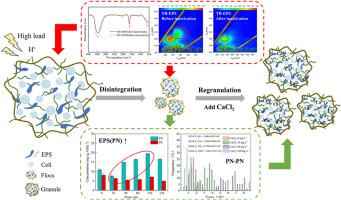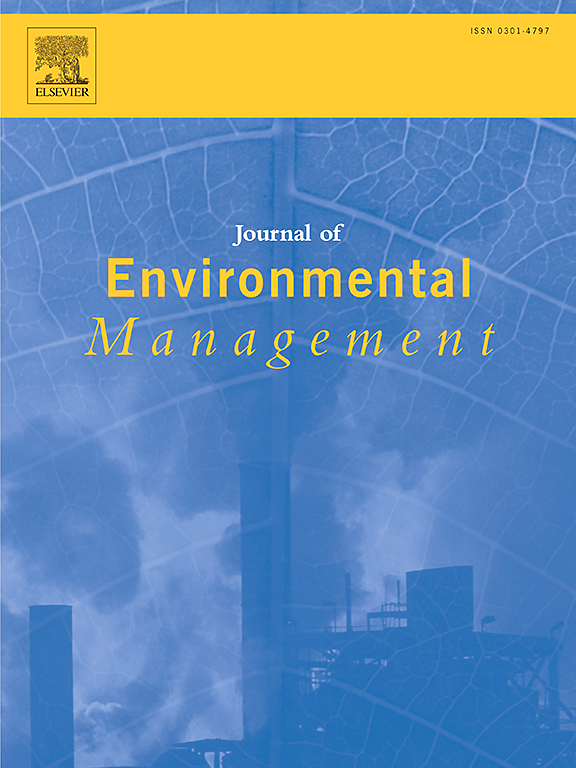Mechanisms of denitrifying granular sludge disintegration and calcium ion-enhanced re-granulation in acidic wastewater treatment
Abstract
Granular sludge is an alternative technology for the direct treatment of acidic nitrate-containing wastewater. Rapid remediation of disintegrated granules is essential to achieve efficient nitrogen removal. In this study, denitrifying granules were inactivated and disintegrated when the influent nitrate-nitrogen concentration was elevated from 240 to 360 mg L−1 in acidic wastewater (pH = 4.1) in a sequencing batch reactor. Tightly bound extracellular polymeric substances (TB-EPS) decreased by 60%, and extracellular protein (PN) was the main component of the reduced EPS. The three-dimensional excitation emission matrices (3D-EEM) results confirmed that the PNs that decreased were mainly tryptophan-like, tyrosine-like, and aromatic. This study further confirmed that the decrease in PN was mainly from the destruction of C=O (amide I) and N–H functional groups. Overloading of nitrogen-inhibited denitrifying activity and the destruction and dissolution of TB-EPS by acidic pH were responsible for granule disintegration, with PNs playing a major role in maintaining granule stability. Based on this, new granules with an average particle size of 454.4 μm were formed after calcium chloride addition; EPS nearly doubled during granule formation with PN as the dominant component, accounting for 64.7–78.4% of the EPS. Atomic force microscopy (AFM) revealed that PN-PN adhesion increased by 1.6–4.9 times in the presence of calcium ions, accelerating the re-granulation of disintegrated particles. This study provides new insights into the disintegration and remediation of granular sludge under acidic conditions.


| 公司名称 | 产品信息 | 采购帮参考价格 |
|---|
 求助内容:
求助内容: 应助结果提醒方式:
应助结果提醒方式:


